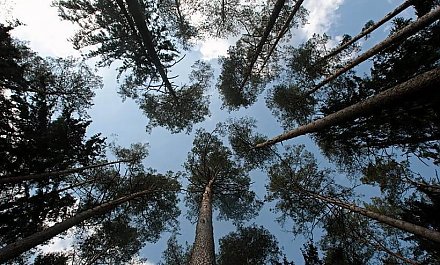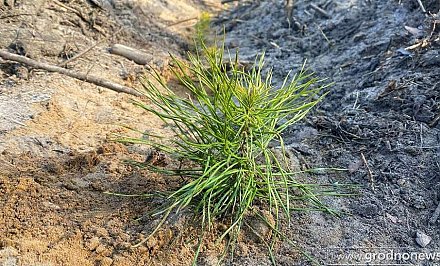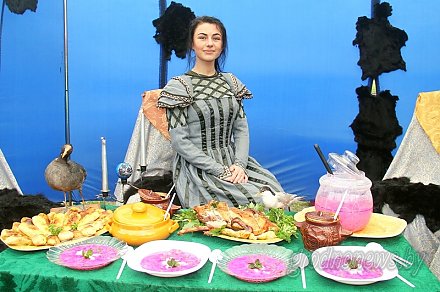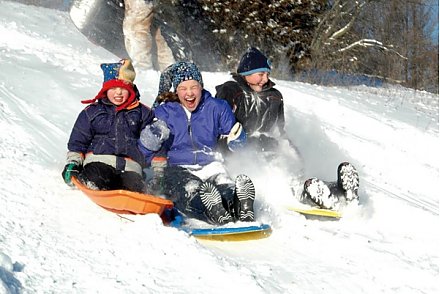Guide to the corners of nature in the project " Grodno region: a protected world"
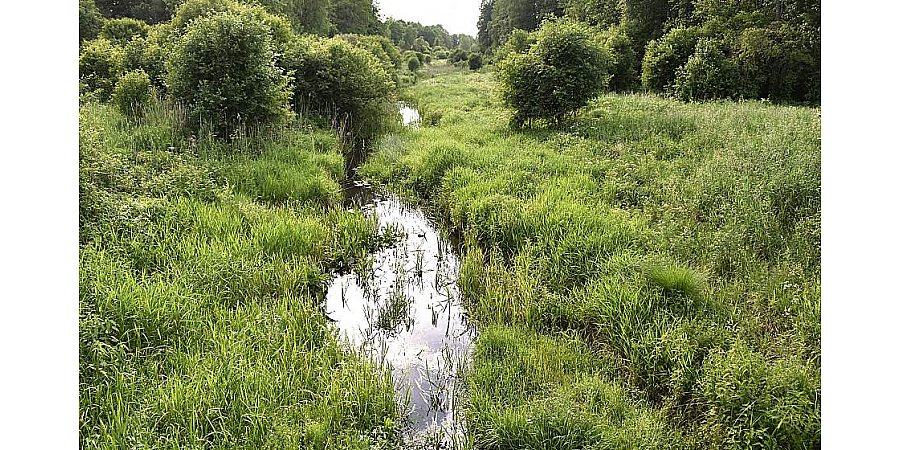
Hydrological reserve “In the floodplain of the Ditva River”
Peatlands, beavers and return to the origins
The hydrological reserve “In the floodplain of the Ditva River” was created in Voronovo district in 1998 to ensure the natural hydrological regime of the Ditva River and restore the flora and fauna. It was proposed to increase the area of the reserve to 898.58 hectares after surveying the territory by BSU scientists.

The core of the reserve is a drained and rewetted bog mass on the left bank of the Ditva River. Peat was mined in lowland bogs after reclamation in the 1980s and 1990s. Then the work was stopped, and the peat fields gradually began to overgrow and re¬swamp. Beavers, who began building dams, also served as a kind of “helpers to nature”.

The vegetation here is mainly boggy, arboreal and shrubby. Berula erecta included into the Red Data Book was noted here. Common European viper which is included in the preventive list of the Red Book of the Republic of Belarus can be found here. As many as 78 bird species have been registered in the reserve, the vast majority of which are nesting here. Some species visit the reservoirs of the reserve during seasonal migrations. The Black stork included in the “Red Data Book” visits the reserve for feeding.
Hydrological reserve «Meshkaly»
Lowland swamps, medicinal peat

Hydrological reserve «Meshkaly» was created in Voronovo district in 1992 to stabilize the hydrological regime of the Ditva River in its middle reaches, to preserve the biological diversity of flora and fauna, taking into account the importance of wetlands for the ecological safety of natural areas. In 2020, as a result of research work, the BSU scientists made a proposal to increase the area of «Meshkaly» to 106.50 hectares.
The territory of the reserve includes various types of lowland and boggy meadows and lowland swamps. This explains the fact that the fauna is represented mainly by wetland or water¬related species. Numerous beaver settlements contribute to further waterlogging and make these places inaccessible. Four species of wild plants included in the Red Data Book of the Republic of Belarus have been identified here. It is the second in Grodno region and the most southern territory of the hair¬like sedge in the republic. The “Meshkaly” hydrological reserve has valuable reserves of medicinal types of peat.
Hydrological reserve «Trostyanka-Morgal»
Swamps give water to rivers

In 1995 several water¬regime reserves in Dyatlovo district were created for rational use and protection of peat resources. Several years later, according to the results of research on bioresources of the National Academy of Sciences of Belarus “Trostyanka¬Morgal” kept its status of a hydrological reserve of local importance.
The reserve plays an important role in the water regime of the surrounding area, maintaining the level of groundwater, giving rise to water supply for small rivers, in particular the Chernyavka and Trostyanka rivers, as well as a number of streams flowing into the Shchara and Dyatlovka. Former peat deposits are habitats of rare representatives of flora and fauna, places of harvesting valuable food and medicinal raw materials.
Hydrological reserve «Vishnevka»
Peat reserves, cranberry massifs

“Vishnevka” hydrological reserve of local importance was created in 2002 to preserve the peat deposit and the largest raised bog in Zelva district. Peat reserves amount to 35 thousand tons here. Once, in the 60s and 70s of the last century, peat was mined here, manually and mechanically with the help of a cutter, and this is clearly visible even today. The bog is fed on melt, rain and ground water and never dries up. In many places, water is on the surface.
It is covered with shoots of the pine and warty birch as well as herbaceous vegetation characteristic for excessively moist areas. There are impressive cranberry areas. It is the main place for collecting this healing berry for the residents of the district. In high places, there are thickets of medicinal and food plant species: wild rosemary, heather, blueberry.
Hydrological reserve «Korevin lug»
Raised bog in its pristine beauty

A hydrological reserve, a berry reserve and a bog massif rare for the region – all this is about the hydrological reserve of local importance «Korevin lug» in Zelva district. The total area of the reserve is 44.5 hectares, it is located 11 kilometers south of Zelva, a district center, not far from the village of Kosheli. It was created in 2002 on the basis of a peat deposit which is the only comparatively large bog of a raised type not affected by human activity in the area. Peat has not been mined here. The natural area has been preserved in its almost original form.
The tract is surrounded by hills that are more than three meters high. The reserve is located in the basin of the Zelvyanka river. There is no drainage of water into and out of the swamp; it feeds on melt, rain and ground waters. At the same time, the swamp never dries up, and in many places the water is on the surface. The places are humid, which influences the nature of the plants. The trees are represented by bog forms of pine and downy birch. A third of the territory is a kind of fruitful natural cranberry plantation.
Hydrological reserve «Berezina»
Iris, beaver and amphibian variety

The local hydrological reserve «Berezina» was declared in Lida region in 1997 on the depleted areas of the «Berezina» peat deposit. Scientists from the Institute for Problems of Natural Resources Use and Ecology of the NAS of Republic of Belarus gave reasons for the fact that it is necessary to restore swamp¬forming processes without damage to the environment.
The reserve is located in the northwestern part of Lida district on the border with Vorono district in the valley of the Ditva river, which crosses it in the western part. Reclamation canals and ditches, shallow ponds are widespread in the place of flooded peat workings. That is why flora and fauna here is characterised by a wide diversity of species. Here you can see three species of wild plants and two species of animals included in the Red Data Book of the Republic of Belarus (Berula erecta, Gladiolus imbricatus, Siberian Iris, great bittern, red¬necked grebe). Beaver, water vole, muskrat, American mink, and European polecat live in the watered area.
Once, in 2015 the Berezina nature reserve began to become shallower. This was caused by the breakthrough of a dam near the village of Narkuny, which for the past 20 years kept the water in the peat bogs at a certain level and did not allow it to go into the Ditva River. This could be a prerequisite for fires: dry peat is very flammable. The situation was corrected by the joint efforts of local authorities, ecologists, specialists of the Ditva peat briquetting plant and fishermen.
Hydrological reserve «Gomshar»
Support for the Neman, ecological corridor

Hydrological reserve «Gomshar» is situated three kilometers north off the district center Mosty, in the valley of the Neman river. In 1994 drained raised bogs capable of natural regeneration were taken under special protection. An important role in maintaining the hydrological regime of the Neman River which flows in Mosty district was also taken into account.
The flora and fauna were affected by the drainage reclamation of the adjacent territories and several crown fires. But the ecological conditions of the raised and transitional bog are recovering. There are 293 species of wild plants and 40 species of wild vertebrates on its relatively small area now. Mountain arnica which is included in the Red Book of the Republic of Belarus grows here. Also, there are many economically valuable species of plants, as well as large areas of cranberries and blueberries here.
Recent studies carried out by the BSU scientists have confirmed that the territory of the reserve is important for the conservation and restoration of valuable water bodies and as an important part of the Neman ecological corridor of international importance. It was proposed to expand the specially protected natural area to 247.31 hectares for better coverage of biological and landscape diversity.
Hydrological reserve “Devil’s swamp”
Lake turns black, cloudberries grow

The highlight of the wetland reserve in Grodno region on the border with Lithuania is a forest lake, which was called the Devil's Lake («Chertovo Ozero”) due to the black color of the water with a high content of peat. It is surrounded by marshy lands. «Chertovo Boloto” (“Devil's swamp») was named after these marshy lands.
The decision to give the territory of more than two and a half thousand hectares the status of specially protected was made in order to preserve the forest and swamp complex existing here, which is distinguished by high biological diversity. The territory of the reserve contains a high¬type peat deposit, raised bogs, drained raised bogs capable of natural regeneration, different types of forests and dystrophic lakes, including «Chertovo Ozero” (Devil's Lake). There is the westernmost in Belarus population of cloudberry here. And this is not the only plant here included in the Red Data Book. The reserve is rich in cranberries, blueberries, lingonberries. The reserve is inhabited by birds included in the Red Data Book: short¬toed snake eagle, gray crane, golden plover and common greenshank. In addition, 10 bird species with European conservation status have been registered here.
Wetland reserve “Mikulishki”
Martagon lily and other exotic plants
The Mikulishki wetland reserve of local importance is being created in the Oshmyany region after a large¬scale survey and scientific substantiation by the BSU scientists in accordance with the regional scheme for the rational placement of specially protected natural areas of local importance in Grodno region. There is a diversity of spruce forests with rich herbaceous vegetation and deciduous forests with spruce and hornbeam on the territory of 3744 hectares. Centenary oaks were found here. Natural landscapes are also unique, they are represented by large¬hilly¬ridged and undulating¬water¬glacial landscapes. 12 species of wild plants included in the Red Data Book of the Republic of Belarus grow in the reserve. Protected species include martagon lily, festuca, Lathyrus laevigatus, Neckera pennata, Lobaria pulmonaria. In the northern part of the reserve there are the sources of the river Merkis (Merechanka). It originates from a low¬lying sedge bog overgrown with black alder. In the upper reaches of the river there are beaver settlements which contribute to strong waterlogging of the territory.
https://grodnonews.by/


